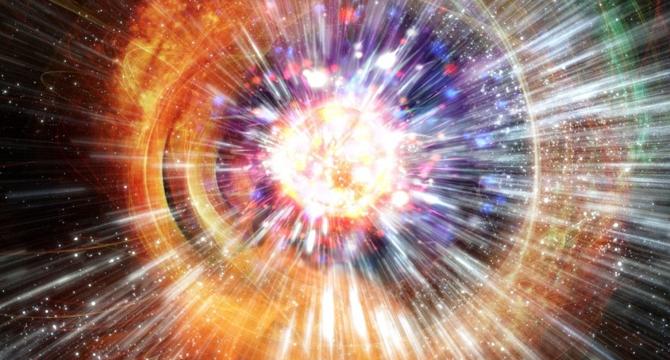Brighter Side of News
5d
347

Image Credit: Brighter Side of News
Astronomers discover what may have existed before the Big Bang
- Dark matter, which was first suggested in the 1930s as an explanation for unusual galactic motions, is still mostly a mystery to scientists. It may have existed before the Big Bang, and is thought to form approximately 85% of the universe's matter. Weakly interacting massive particles (WIMPs) were considered prime candidates for dark matter, but their search so far has been fruitless. The Dark Big Bang theory, which suggests that dark matter arose from a second Big Bang that was separate to the conventional one, could provide necessary evidence of the nature of dark matter's distinct origin, according to researchers.
- The theory of the Dark Big Bang was proposed 10 years ago by Katherine Freese and Martin Winkler of the University of Texas at Austin. Their theory suggests that dark matter was generated by the decay of a quantum field trapped in a false vacuum state.
- The Dark Big Bang model suggested that the early universe consisted of two sectors. The visible sector, with familiar particles and forces, and a dark sector with cold and decoupled particles. Eventually the dark sector underwent a phase transition, producing dark particles governed by unique physical laws.
- The DBB theory can accommodate a wide range of dark matter particle masses – from as light as a few keV to as heavy as 1e12 GeV.
- The theory of a Dark Big Bang offers a fresh perspective on the early universe, as it challenges the commonly accepted theory that dark matter, and all other matter, including visible matter, originated from the same event.
- Cosmin Ilie and Richard Casey of Colgate University have further explored the Dark Big Bang theory, refining predictions which could soon be within reach of the next generation of pulsar timing array (PTA) observatories.
- The detection of gravitational waves generated by the Dark Big Bang could provide crucial evidence for this new theory of dark matter. It will be particularly useful in a scenario with low-frequency gravitational waves that could be detected by PTA experiments.
- Understanding dark matter goes beyond scientific knowledge as it is a quest to discover the fundamental nature of the universe. The DBB theory could aid in revealing the mystery of the universe.
- The DBB theory adds to the ever-growing arsenal of attempts by researchers to unveil the mystery behind dark matter. Projects like SKA, which are expected to come online in the next few years, will serve as important tools in the study of dark matter.
- Each discovery brings us closer to unveiling the full tapestry of existence.
Read Full Article
20 Likes
For uninterrupted reading, download the app